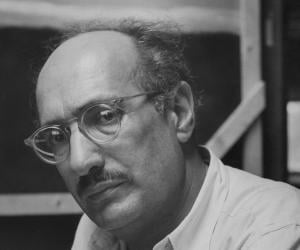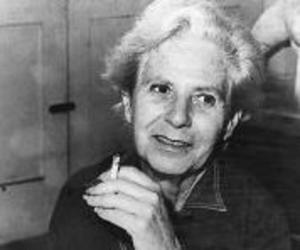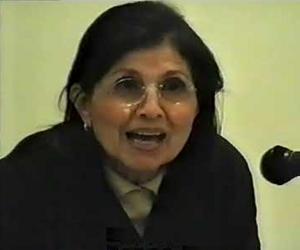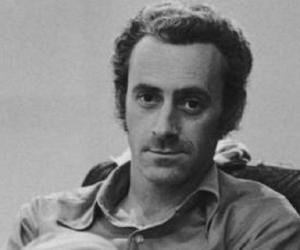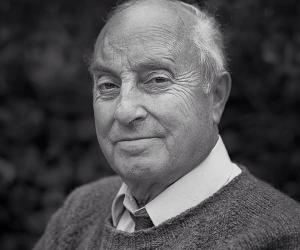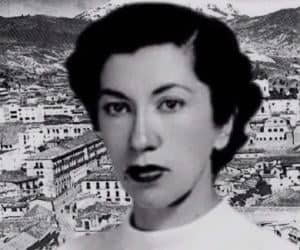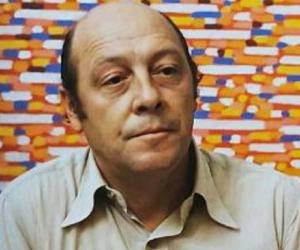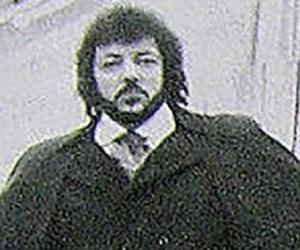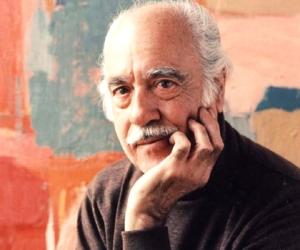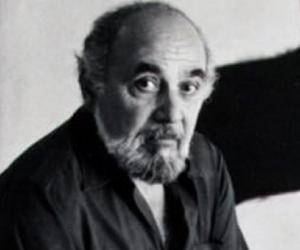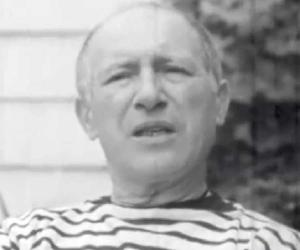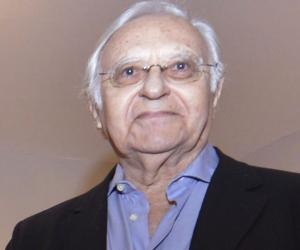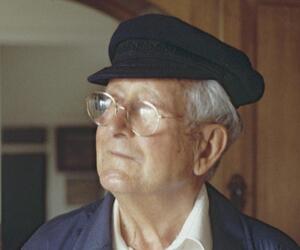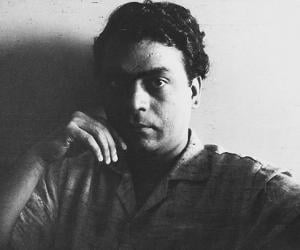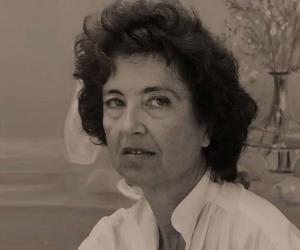Quick Facts
Also Known As: Markus Yakovlevich Rothkowitz
Died At Age: 66
Family:
Spouse/Ex-: Edith Sachar, Mary Alice Beistle
father: Jacob Rothkowitz
mother: Kate Goldin Rothkowitz
children: Christopher Rothko, Kate Rothko
Born Country: Latvia
Abstract Painters American Men
Died on: February 25, 1970
place of death: New York, New York, United States
Ancestry: Russian American
Cause of Death: Suicide
More Facts
education: Yale University
Childhood & Early Life
Born on September 25, 1903 in Dvinsk, in the Russian Empire, Rothko was the son of Jacob (Yakov) Rothkowitz, a pharmacist and was the youngest of four siblings.
At the age of five he was sent to study the Talmud due to the Orthodox Jewish views of his father.
With the growing fear of the ‘Imperial Russian Army’, Rothko’s father immigrated with two of his sons to United States while Rothko stayed back in Russia with his mother and sister.
The family later reunited in Portland in 1913 but soon after Jacob Rothkowitz passed away leaving the family in an economic crisis. Young Marcus worked odd jobs to help his family financially and support his education.
The intelligent student began studying in the United States. He passed out with honours from ‘Lincoln High School’ in Portland in 1921.
After learning English, he received a scholarship from Yale where he found the community to be elite and also racist. When his scholarship did not get renewed he did several part-time jobs to support himself.
Career
In 1923, Rothko moved to New York finding work in the garment district. Influenced by a friend’s art designs, he enrolled at the ‘New York School of Design’.
Viewing art as a tool of emotional expression, his first exhibit of work was with a group of young artists at the ‘Opportunity Gallery’ in 1928.
With a little amount of success coming his way, he started teaching painting and clay sculpture at the ‘Center Academ’ in the year 1929.
Over the next few years he worked with several artists and refined his craft. Finally in 1933, he displayed his first show at the ‘Portland Art Museum’ consisting of his drawings. He also displayed the works of his students at the ‘Center Academy’.
He returned to New York and did his first one-man show in East Coast at the ‘Contemporary Arts Gallery’ displaying fifteen oil painting and few aquarelles and drawings.
In 1935, he associated with Ilya Bolotowsky and many others to protest for the equal rights of the Artists. Also during this period he was shaping his influential work and his new art forms which would later go on to become his trademarks.
Two years later he worked with the Artists’ unions to set up the ‘Municipal Art Gallery’. It was 1940, that he stopped painting for a while and focused on reading the works of James Frazer and Sigmund Freud.
In 1942, he revived his art by being inspired by Friedrich Nietzsche’s ‘The Birth of Tragedy’. His painting ‘The omen of the Eagle’ was a depiction of these thoughts.
In 1945, he did a one man show at Guggenheim’s ‘The Art of This Century Gallery’ where he displayed his masterpiece ‘Slow Swirl at the Edge of the Sea’. The show however did not give financial returns to Rothko and his focus shifted from ‘Surrealism’ to the abstract work of Clyford Still.
Next year he created transitional ‘multiform’ paintings like ‘No. 18’ and ‘Untitled’ which released two years later. These forms became a signature style in his later exhibits.
In 1949, his essay called ‘The Romantics were prompted’ was published which was a gentle justification of his artistes inspiration from the mythological figures. This time he came across Matisse’s ‘Red Studio’ which influenced his later work.
In the 1950s he visited Europe with his wife and had one-man shows in galleries in Amsterdam and also Japan.
In 1960s the ‘Rothko Chapel’ came into existence in Houston, Texas. He considers this his most significant work for which he gave six years of his life.
Major Works
‘White Center’ and ‘Orange, Red, Yellow’ are famous paintings of Rothko which have broken many sale records and collected huge amount of money. While the ‘White Center’ was sold for 72.8 million dollars the latter was sold for 86.9 million dollars in New York.
’Rothko Chapel’ was his most celebrated work which opened in 1971, by when Rothko had passed away.
Personal Life & Legacy:
Rothko’s first wife was Edith Sachar, a jewellery designer. He had met Edith in Lake George and they got married in 1932. The marriage culminated in divorce nine years later.
A year after his divorce with Edith, in 1944, he met his second wife Mary Ellen ‘Mell’ Beistle. The couple got married in the spring, the following year.
In 1969, the couple separated due to Rothko’s increasing health problems and impotence. They have two children.
At the age of 66, Rothko was found lying dead in his kitchen by his assistant Oliver Steindecker. The artist had overdosed on anti-depressants and committed suicide by slitting his wrists.
David Anfam made a catalogue of Rothko’s 86 paintings. The book was titled ‘Mark Rothko: The Works on Canvas : Catalogue Raisonné’ and was published in 1998.
His son Christopher published ‘The Artist’s Reality’ in 2006. This was an unpublished manuscript by Rothko himself
Facts About Mark Rothko
Mark Rothko was known for his deep interest in philosophy and literature, often drawing inspiration from these fields for his art.
Despite his abstract style, Rothko considered himself a traditional painter and was heavily influenced by artists such as Rembrandt and Velázquez.
Rothko was a founding member of the abstract expressionist movement, which revolutionized the art world in the mid-20th century.
He was known for his meticulous process of layering thin washes of paint on canvas, creating rich, luminous colors that seem to glow from within.
Rothko’s large-scale paintings were intended to evoke powerful emotional responses from viewers, inviting them to contemplate the depths of the human experience.


